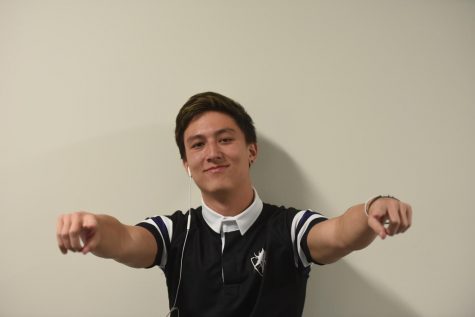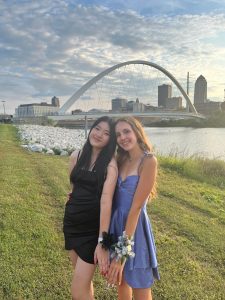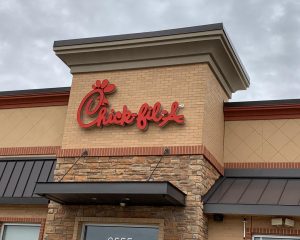Mixed heritage without mixed resonses
Cari’s mother (far left), and her father (middle) with their children at the end. Cari is a biracial student at Johnston, with her mother being white and father being Asian.
December 21, 2017
As interracial couples have become more socially acceptable over the past few decades, the number of biracial children has only increased. A statistic taken from National Public Radio predicts that the biracial population is going to be the fastest growing over the next 44 years. As of 2017, there are roughly nine million American citizens who are of mixed heritage.
The increase in the population of biracial Americans allows more people to grow up in a culturally unique and original setting.The number of biracial youth is rising. Four percent of the current high school population is biracial; a one percent increase since October of 2010
Cari Naanep ‘19, has a father who is an Asian and a Caucasian mother. While most of Naneep’s friends are white she thinks that has more to do with circumstance rather than preferring one races tendencies over the other. “I’ve never really seen it as being accepted or not by the different race groups because I don’t think people are friends with only their own race anyways, at least not at this school,” Naneep said.
With a student body that is 82 percent white, the school is predominantly Caucasian students. However, Naanep said meeting other biracial people is not uncommon. She has met many half-Asian half-white kids all around Iowa through tennis.
Naanep says her home life is not at all unique compared to that of someone who has two parents of the same race. “My dad isn’t super traditional so that probably has something to do with it, but I would still say that having parents of two different races offers a lot of cultural exposure,” she said. “I guess I would say other than the fact that I look mixed, my experience being biracial isn’t that much different from anyone else who isn’t.”
Lindsey Batkiewicz ‘19 is another student who has parents of two different races. Her mother is Mexican, while her father is Caucasian. “I only moved to Johnston last year, but it’s not too different from any of the other schools I’ve gone to,” Batkiewicz said.
Batkiewicz’s older sister, Madison Batkiewicz, ‘18, doesn’t feel any different. “We’ve never really had any type of issues because of our race,” Madison said.
While Lindsey has experienced crude remarks due to her race, she never considers it anything worth stressing over. “People make Mexican jokes sometimes, but it’s never serious or offensive,” Lindsey said.
C Sue Baker’s comments on biracial issues in Johnston were consistent with what the students said; Even though tension among biracial and other students may be more of a problem in different areas or schools, it has never been an issue for the Johnston district.
The sisters don’t feel too differently from Naanep in that their home life isn’t split down the middle because of their parents’ different races. “I can’t really think of anything we do that is super in touch with our Mexican heritage,” Lindsey said. “My mom knows how to make certain dishes like tamales, but that’s it,”
Despite the fact that none of the students felt that being biracial gave them a special or unique experience compared to that of a student of purely one race, all of them enjoy the fact that they are of mixed ethnicities. Although students with mixed ethnic backgrounds appear different than those who are born to parents of the same race, a majority of their experiences are entirely the same. At the end of the day, whether someone is white, black, Mexican, Asian or some given combination of any of them, kids are kids and they will grow up the same regardless.





